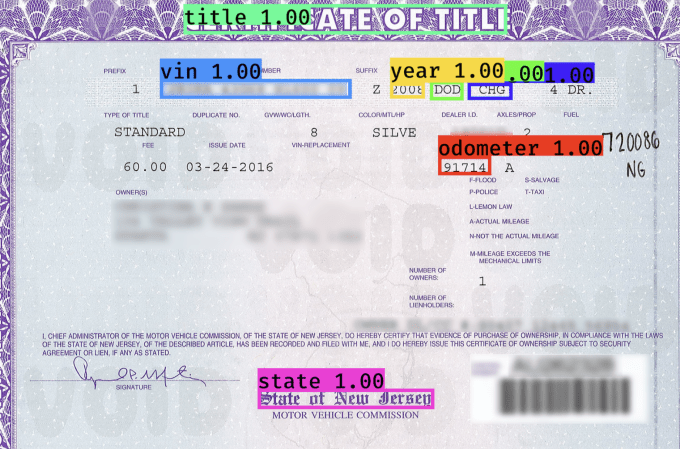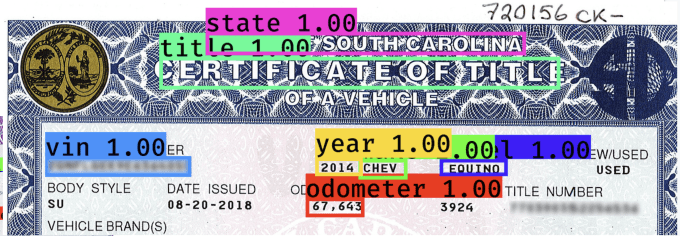By Vikas Mehta, Chief Operating Officer, ACV
When we set out in 2019 to streamline and digitize a critical but completely manual back-office task, we had no idea just how essential that innovation would be for our company’s pandemic pivot and long-term growth.
As the nation’s fastest growing wholesale online automotive marketplace, ACV has developed a suite of tools and technology to help car dealers buy and sell better in a digital world. We’ve revolutionized the online wholesale car industry over the past few years by optimizing, automating, and improving the online car auction experience through products and data intelligence. But until recently, one mandatory task for each automobile sold in our digital marketplace remained fully physical: processing paper titles.
A painstaking, manual task
For every single title to be transferred, a back-office operations team member retrieved and opened the envelope, evaluated its validity (based on each issuing state’s disparate set of rules), notarized it (or not), and manually entered information from fields located in different spots on each state’s individual forms. Titles are often handwritten, messy, and incomplete. Each title changed hands repeatedly as specialized teammates validated specific info then passed the paper down the line. This slow and error-prone method of processing titles “by hand” has plagued the auto industry for decades, and most online and physical auction providers had begrudgingly accepted it as an unfixable norm.
A few years ago, when ACV hit a growth point as auto sales increased, the salespeople celebrated. So did the document processors, but with apprehension: more sales mean more titles. As the daily title count crept up to nearly 1,000, processing time per title grew to several days and carried a 3-5% rework rate. Once, a typical Buffalo snowstorm delayed the mail for a day and the postal carrier showed up with double the number of envelopes the following morning. It took us over a week to dig out of that paper blizzard.
Change the paradigm
About a year before COVID changed the way everyone operated, we began looking at ways to streamline this arduous title process. But in the midst of an all-hands-on-deck, constant survival mode, the idea of taking time away from processing titles to have a conversation about processing titles seemed daunting. But we did it anyway, because as the pace of used car sales through ACV continued to quicken, this step wasn’t going to get faster on its own. And it needed to.
The conversation started with a blue sky notion that seemed absolutely preposterous – what if we could get a title in and out the same day? It says a lot about our organization that instead of questioning the sanity of that notion, the team jumped into positing real-world solutions. Ideas included everything from simply hiring a lot more people to employing robotics to increase areas of efficiency. But ultimately discussions led to an answer no one in the room originally thought possible: Yes, we can process a title in a single day – by re-building the entire process from beginning to end.
A days-long process goes digital
The solution’s framework came from an ACV-internal hackathon idea: to use machine learning and computer vision algorithms to support data extraction, record matching, and quality control, which are some of the most time-consuming and error-prone steps in our manual titles workflow. The vehicle identification number (VIN) on state-issued titles was the first candidate for this experiment. Extracting that VIN with high confidence would allow our systems to link the title case to the auction records and track the title’s progress through the multiple phases of processing.
Because vehicle titles come as a set of document types, we needed an orchestrated set of algorithms to automate the multiple steps required in each case. Each of the 50 states has its own rules for transferring title ownership, meaning the mix of documents in each case could be substantial. Therefore, we developed algorithms to identify the title among the documents, others to detect and extract the VIN from the title page, and still others to manage a decision matrix that handles each case based on the previous steps.
We leveraged methods from computer vision, natural language processing, and decision science. Our python stack was built on top of deep learning, machine learning, and computer vision algorithms, choosing each tool for the task it performed in our pipeline. The overall result was a scalable system with modular architecture that could flex efficiently with the multiple ways ACV is growing in volume, variety, and velocity.
Solve through iterations
Over the course of 10 months, we built in phases and deployed several evolutions of our proprietary algorithms and digital pipelines. To deliver the most valuable optimizations, we chose an iterative approach that prioritized business impact in states with the highest volumes on ACV’s marketplace (New York and New Jersey), followed by states whose titles were most similar to those higher volume states. As we enhanced our capabilities, we tackled the more difficult or lower-volume states.
State titles and support documents vary considerably in their layout, colors, fonts, content, abbreviations, and stability of time (to name a few ways). Early on we discovered that despite Google Vision’s OCR being best-of-breed, it struggled when certain fonts, color combinations, or background patterns made reading hard for even the human eye. High-precision OCR is really only table stakes when it comes to document understanding systems of this detail and scope. But we believe overcoming each of these barriers creates an even greater technical moat around our solution in the market for titles processing support.

Image Credits: ACV (opens in a new window)

Examples of varying appearances of vehicle titles by state. Image Credits: ACV
Integrating AI enhancements is just as important as building them. That is why we exposed these new capabilities through a new digital mailroom experience for more specialized roles in the titles workflow. Our objectives and metrics focused on increasing the coverage of our tracking, the quality of our tools, and the guarantees we could make with our internal stakeholders – all with an eye towards increasing ACV’s user satisfaction. Put together in a human-in-the-loop paradigm, the AI system decides whether it can complete the task itself with 100% precision (97% of cases) or needs a human expert to do so through custom interfaces (3% of cases, usually due to paper quality issues). This whole endeavor reduced a week-long manual process down to a consistent one/two-day internal cycle time, with several titles same-day processed.
COVID necessitates a quick re-think
Just as titles began flowing at a more efficient pace, COVID added the dose of disruption felt by every industry around the globe. So in true ACV fashion, we pivoted this process and many others to preserve independent auto dealers’ ability to do business.
Already in an innovation/overhaul mindset having just re-tooled the entire process, we were well positioned to push further. In just two weeks, the team re-tooled a tech enabled workflow that allowed our teammates to complete parts of the process remotely.
Each day, a skeleton in-person crew retrieved paper titles from the mail, sanitized them, and prepped them for remote team members to pick up and complete the clerking process from home. We stood up an internal app that took the power of our office technology and placed it into our remote teammates’ hands. With these optimized processes deployed, admins validated all data points and processed the title reassignment while completely remote. Finally, the processes would support remote triggering of validation, checking, and shipping to offset the COVID constraints.
And it worked.
In July of 2020, we were processing double the title volume as compared to July 2019 with the same headcount and only 20% of the team in the office. All of this was done during a period of growth and complexity for the company, too. Adding another improvement was a pretty simple user experience play – we were able to consolidate user validation points into one graphical interface that made the “clerking” phase of the process twice as efficient, more than doubling individual daily capacity and serving as an investment that will help us scale long-term.
A solid cultural foundation
Without a doubt, ACV survived the COVID disruption because of the many tools and strategies that were already in process pre-pandemic. We were structurally set up to move on this emergent opportunity because our company culture has been carefully cultivated since day one around a steadfast set of values:
1. Solve the hard, non-shiny problems
While adding efficiencies internally also eliminated wait times and accuracy issues for our end users, rethinking the entire title process wasn’t an obvious choice in the context of limited technology resources. In fact, this move balked the industry-wide propensity to ignore non-urgent problems until they are on fire (likely the case had we attempted this transformation forced by COVID). Most high-growth companies would have simply hired more title-clerking teammates instead of tackling a complex process that was functioning (on par with industry). Instead, we prioritized this disruptive, non customer-facing opportunity, a move that took risk, discipline, and careful investment of time and scarce resources like high-level expertise of AI/machine learning experts. But for us, these investments were a strategic move toward scalability and success.
2. Iteration + Immersion = Innovation
The way our diverse teams rallied together is why no one flinched at doing more work in less time. Working side-by-side, our back office ops team and our AI/machine learning team engaged in epic collaborative sessions spanning several months of workshopping every tiny detail of every state’s form and every step of the transfer repeatedly until the tech solution fit the back office opps’ needs perfectly. This was immersion in its classic sense as our teams co-located and walked a mile (or scanned a title) in each other’s shoes, bringing together the immediate and clear nature of titling work combined with the longer-term, deep-thinking mindset of our data science teams.
3. Trust your team
For ACV, having the right people, purpose, and process has led to a suite of world-class, data-driven products that position us as leaders in the auto industry and in the tech industry simultaneously. In this particular case, our team solved the problem of arduous, complex, archaic titles processing. But while we were in the thick of the iteration, experimentation, testing, learning and sometimes failing, we did not know we would succeed. ACV made this bold investment because we knew our people shared the purpose and passion to simply find the way.
In the end, digitizing this back-end operation helped us survive the global pandemic and strengthen the value of our auction suite. With this innovation behind us, our teams are focused on continued efforts to optimize ACV’s reputation for creating the best experience possible for our dealers.